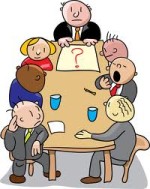One of the treatment methods I offer children and their families is Collaborative Problem Solving (CPS), by Dr. Ross Greene. What is Collaborative Problem Solving?
CPS is a method parents and care givers can learn to help children solve problems and learn skills. It will help children become less challenging. Dr. Ross Greene uses the term lenses to understand ‘why’ children do what they do. And, there are two very important lenses you need to learn as you work with this model.
Many interventions used by parents, care providers, or service providers are adult directed. Parents, family members, care givers, psychologists, social workers, psychiatrists, teachers, teacher's aids, and other service providers get together and decide how to solve the child's problem and enforce it through sheer will or through behaviour plans. The child is not involved or invited. Collaborative problem solving invites and seeks input from the child about what the problem(s) might be. The CPS model offers an opportunity to: a) get to the root of the problem with the child b) see the problem from the child’s view, and c) solve the problem with the child.
Why are Children Challenging? As stated earlier, challenging children lack the cognitive skills necessary to do a task or meet the requirement being asked of them. What exactly does this mean? Take a child who does not want to do his math homework. Every time the child is asked to do the homework, the child will throw the papers, perhaps sit there and stare at the page, scream, or do anything to not comply with the request at all. In this situation there could be many reasons ‘why’ the child does not or cannot do his math homework. However, there is one thing you can be sure of: The child is being asked to do a task he finds difficult and has a lagging skill that is interfering with his success. We need to remember children do not wake up every morning and ask themselves “Now, where can I mess up today?” Children want to do well and want other people to like them. Therefore, a major theme of Collaborative Problem Solving is: "Kids do well if they can." This view has been supported and is continuing to be supported by years of research in neuroscience. When are children challenging? Children are challenging when the demands or expectations exceed their skill level. It is usually at this point that children ‘look bad’. And looking bad can be described through many words like temper tantrums, screaming, hitting, swearing, non compliance, reckless behaviour. The list could go on forever. An important goal for those engaging in CPS is to determine a child’s lagging skills and to discover the situations or conditions where the lagging skill results in challenging behaviour. In CPS, these situations are referred to as unsolved problems. Wow, that was an earful. Let me give you a visual to help explain this aspect of CPS: Find lagging skill… Find situations where child is challenging… and you have an unsolved problem.
What does CPS look like?In the beginning, you as a parent or service provider will complete the Assessment of Lagging Skills and Unsolved Problems (ALSUP). This assessment will be used as a tool to discuss the child’s lagging skills, to pinpoint the situations that are challenging, and to outline the unsolved problems. From this point you will be asked to pick three unsolved problems to work on. Yes, only three problems. You cannot fix every problem at once and as you begin to problem solve, you may even probably notice that some of the issues will begin to disappear without even addressing them. In sessions, you and the child will begin the problem solving task. You read that right...
You will learn about Plan A, Plan C, and Plan B.
Plan B consists of three steps: Step 1: Empathy – you gather as much
information on the problem as you can Step 2: Defining the problem – you
contribute the adult perspective and Step 3: Invitation – you and the child
brainstorm solutions that will meet As you begin to use these steps, you will learn more about CPS and how each plan and step works within your unsolved problems. Where you can learn more about CPS?Dr. Ross Greene has a great website which is full of information and resources on CPS. Please go to www.livesinthebalance.org. |
|
Home International Adoption Psychological Assessment Contact Anne Privacy Policy Site Map |


 ”.
”.

